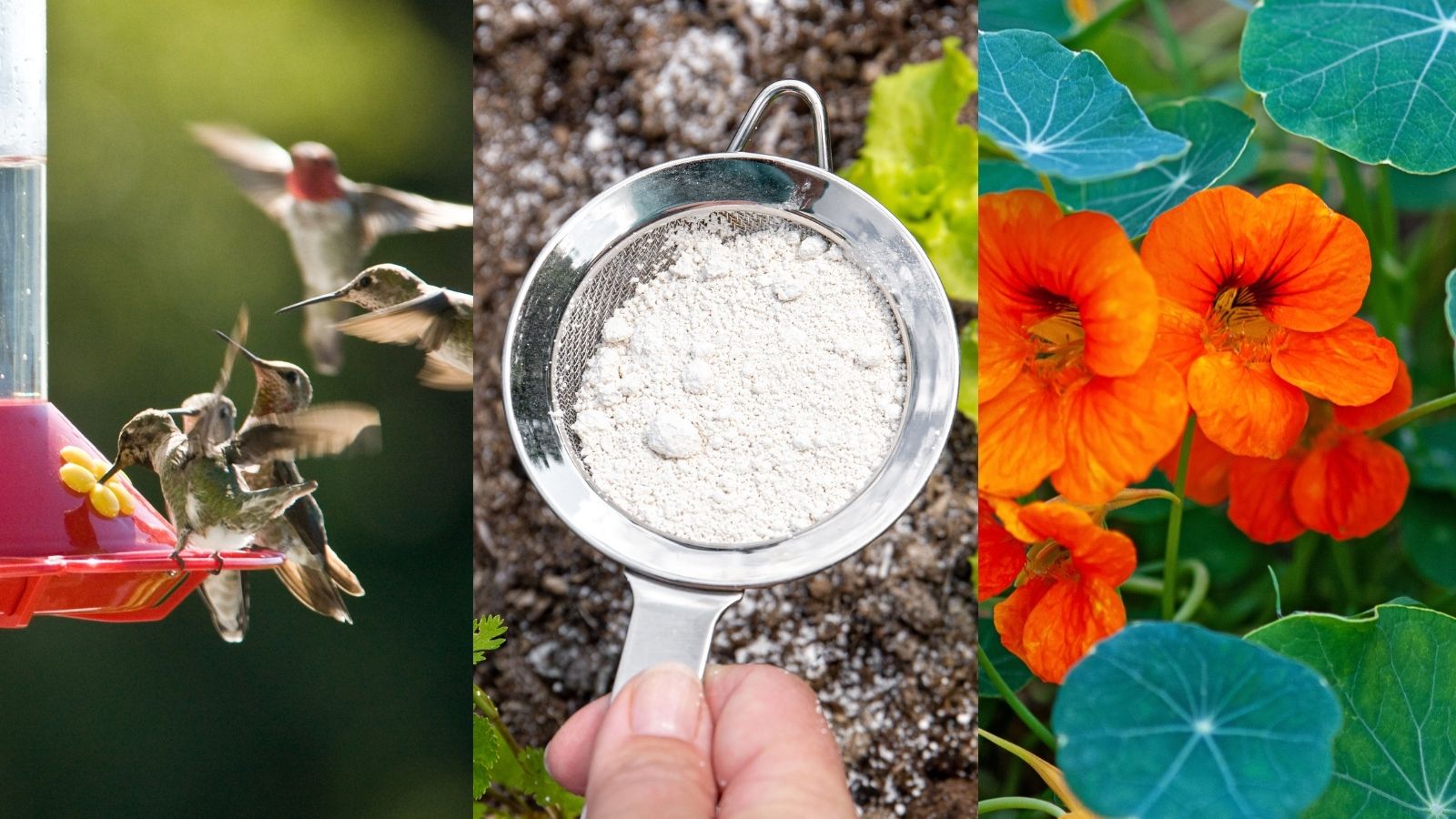
There is nothing more frustrating than heading out to your vegetable patch to find that your crop has been demolished overnight. Or perhaps your enjoyment of beautiful blooms, such as dahlias and pansies, is being cut short by hungry slugs and snails.
If pellets and pesticides were the most effective solution, we wouldn't need to keep buying them – and while we can bend nature to our will with natural pest control methods, ultimately we need to cultivate a level of acceptance when it comes to pests that can destroy plants.
In our efforts to keep common pests, such as aphids, mosquitoes, spider mites, thrips and mealybugs away from our outdoor plants, gardeners have tried everything – including using spices to deter common garden pests and other scents garden pests hate. We spoke to gardening experts to find out the best ways to keep pests out of our backyards, without reaching for the chemicals.
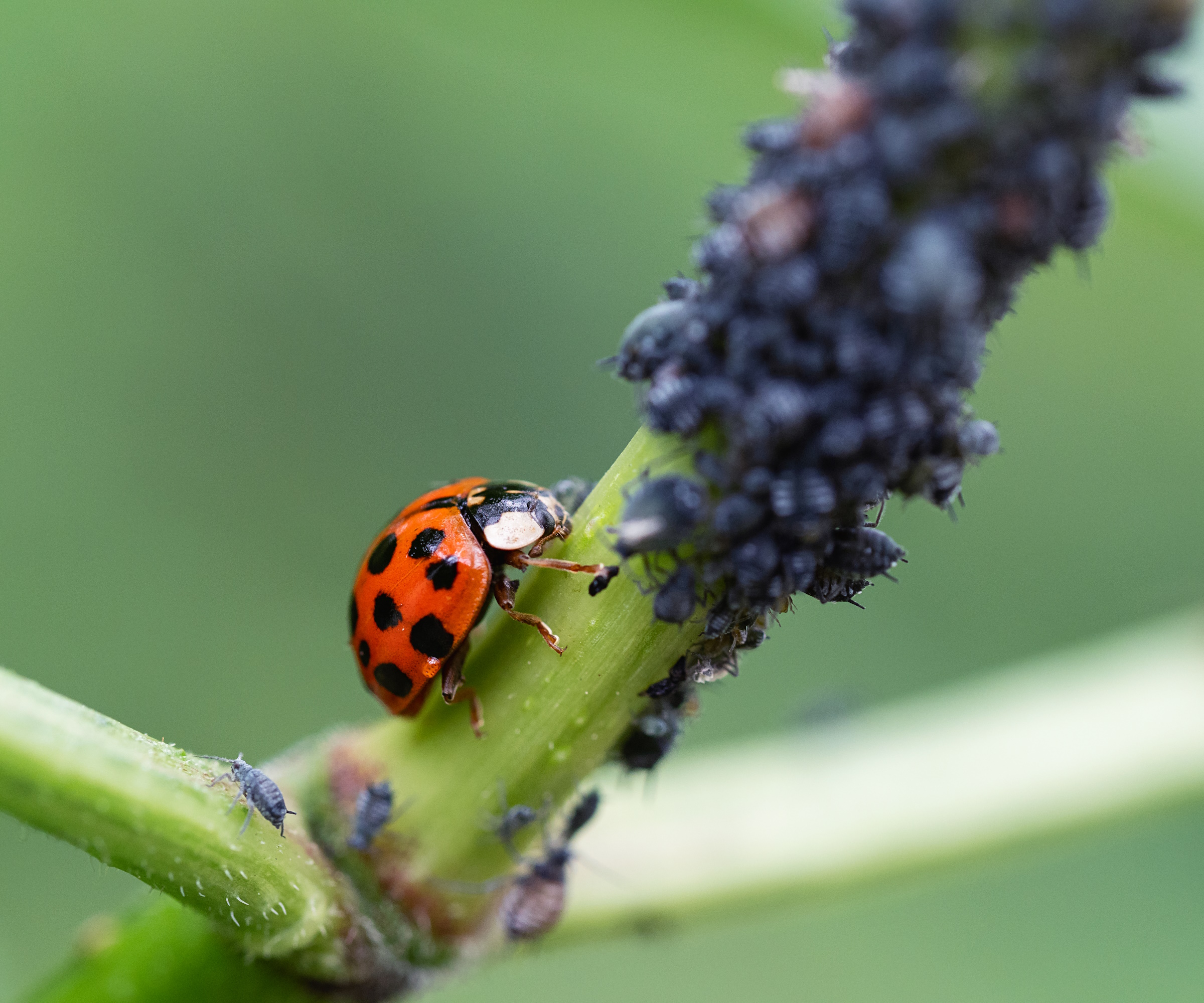
7 of the best natural pest control methods
Can you try a combination of these environmentally-friendly pest control techniques, and remember that a good garden grows where a good gardener goes. By observing and removing pests by hand when watering, you can spot pests before they multiply.
1. Attract natural predators with umbelliferous flowers
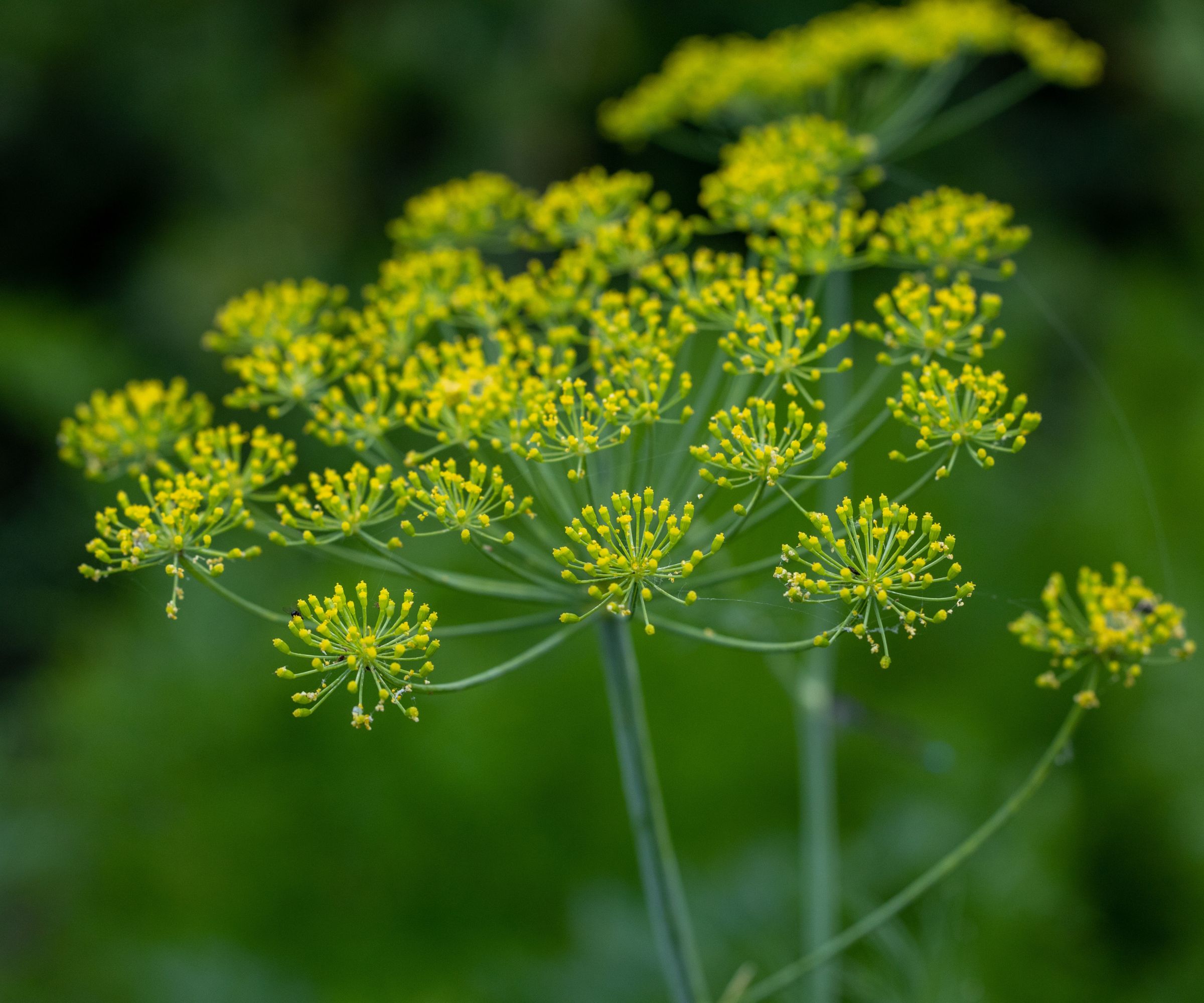
According to Carissa Kasper, the founder of garden design company Seed & Nourish, the best natural pest control method is not organic sprays or a hard shot of water, or even a repellent at all. 'The most effective way to control pests like aphids, spiders mites, or whiteflies is to build eco-systems through planting umbelliferous flowers throughout your garden,' says Carissa. This will attract more wildlife, including bugs that will eat more troublesome pests.
'Umbellifers are characterized by upside-down umbrella-shaped flowers with clusters of nectar-rich blooms,' Carissa continues. 'They are highly attractive to beneficial insects like hoverflies, parasitoid wasps, and lady beetles that feed on small-bodied pests like aphids and spider mites.' When used freely, they provide natural pest control.
Flowers including yarrow and ammi are umbelliferous, and herbs such as dill, fennel, and cilantro also produce flowers in this shape. To get started, you can purchase dill 'bouquet' herb seeds at True Leaf Market.
2. Focus on growing healthy plants
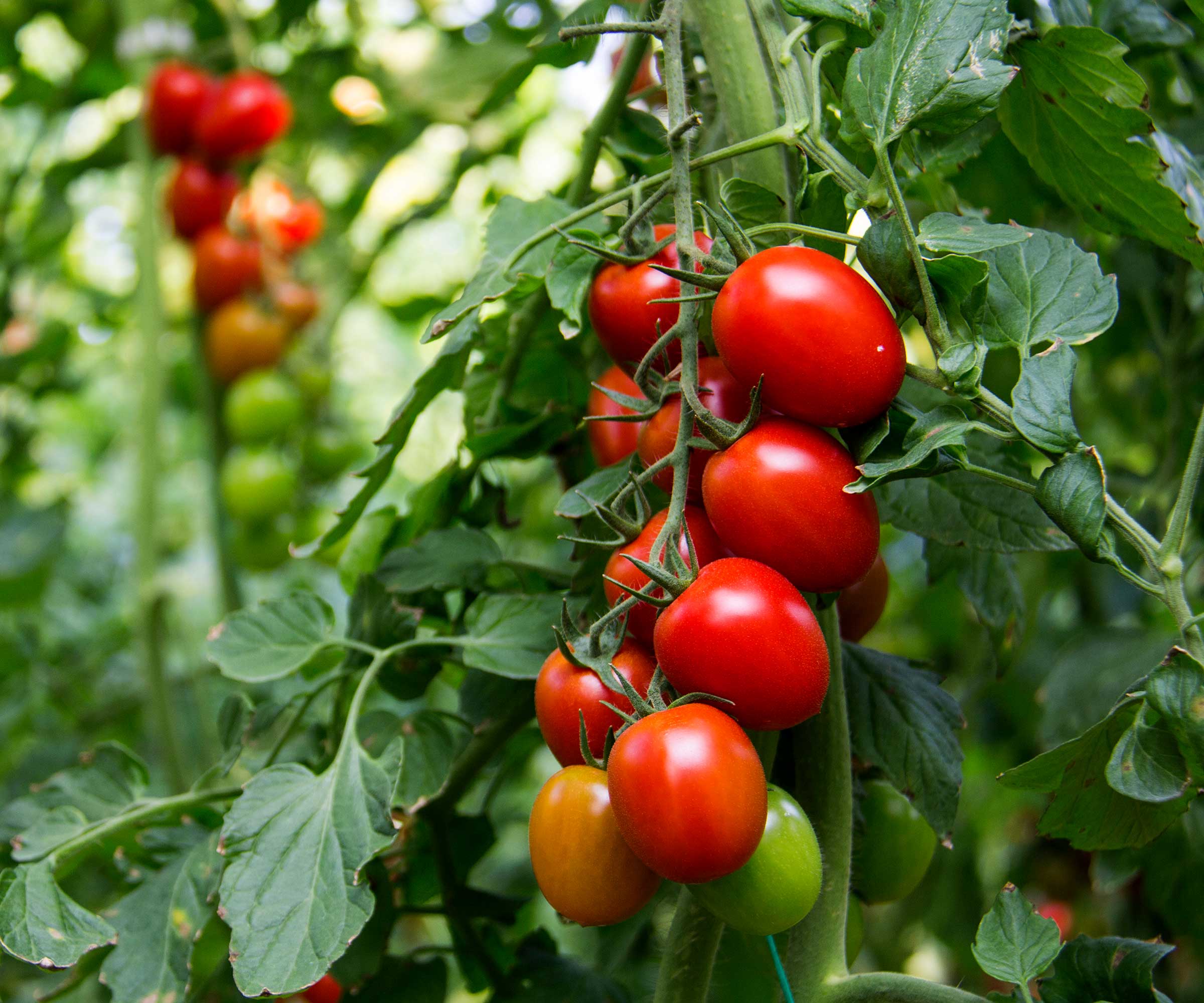
Healthy plants will have more resistance against pests, and although healthy plants are never totally safe from a pest invasion, pests are naturally more likely to target sick or dying plants. There are lots of ways you can grow more resilient and robust plants. For example, Homes & Gardens' head of gardens, Rachel Bull recommends concentrating on your soil health.
'The first step in improving your soil health is to find out its type and pH level,' says Rachel. 'Then you can enrich your soil by adding organic matter, or your own homemade compost. Aerating your soil with a fork and mulching periodically can also increase its quality, helping it to provide the best nutrients and root support for your plants.'
Other simple things you can do include feeding plants with fertilizers, available at Amazon, and ensuring they are getting enough water and sunlight.
3. Grow a sacrificial plant
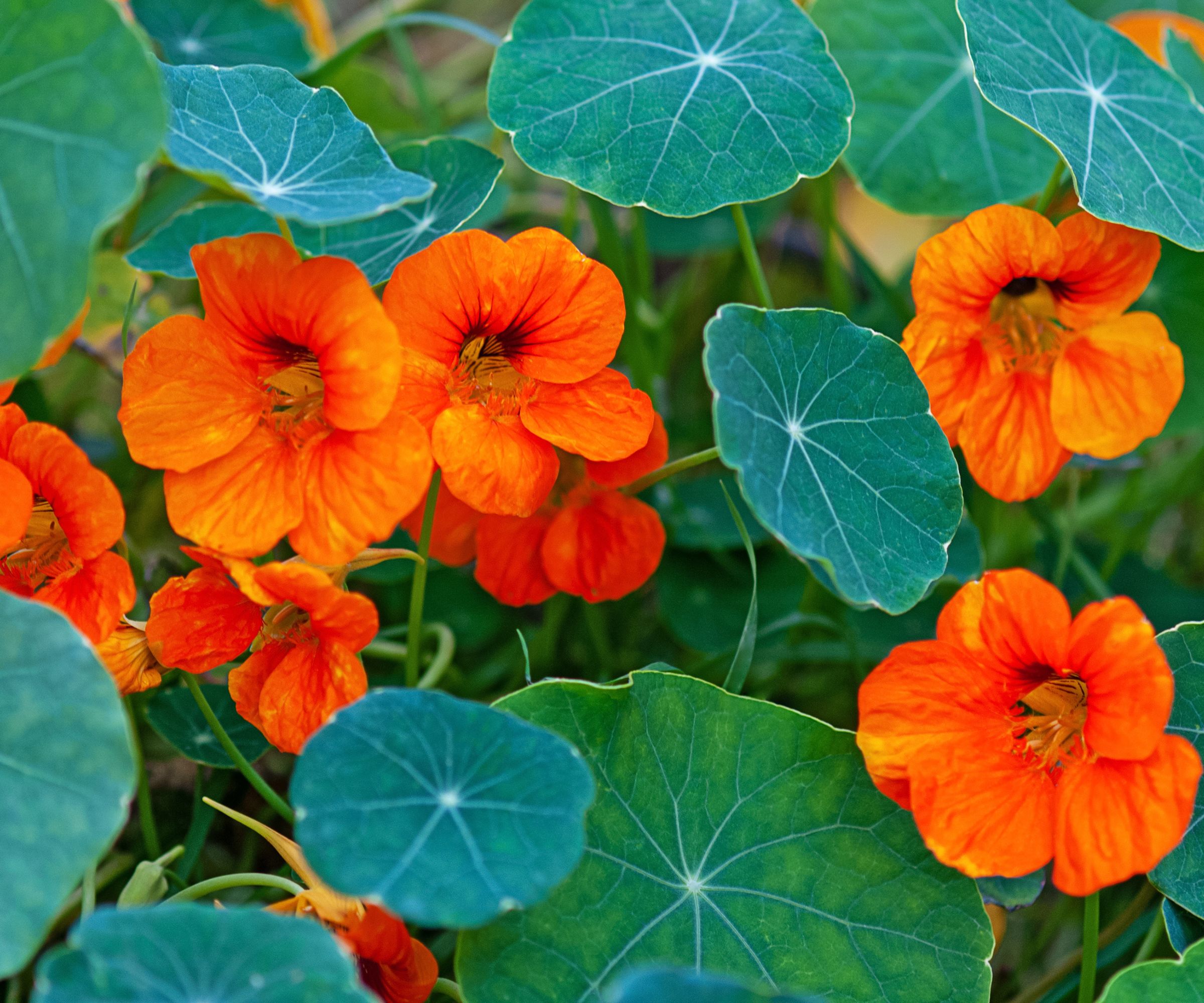
Whether you call them sacrificial plants, trap plants, or indicator plants, a plant that you essentially 'offer up' to the pests is a well-known and effective pest control method. For aphids, try nasturtiums and nettles, and for slugs, try French parsley and marigolds.
Carissa Kasper recommends using trap crops with attractive flowers positioned just outside of the garden, isolated from your favored crops. 'A pot of nasturtium contains fast-growing stems, leaves, and flowers which are prized by soft-bodied pests like aphids that can easily pierce their tender stems,' she says.
'We allow these insects to build up on our trap crops, we don’t spray water or soaps, until they develop a bank, a buffet for beneficial insects. If our banks develop beyond acceptable levels and we begin to see clusters spread into the garden, or the insect growth outpaces the plant growth, we pull the plant, sacrifice it to the green bin, and replant.'
You can pick up marigold seeds at True Leaf Market and nasturtium seeds, also at True Leaf Market.
4. Try the traditional companion planting method
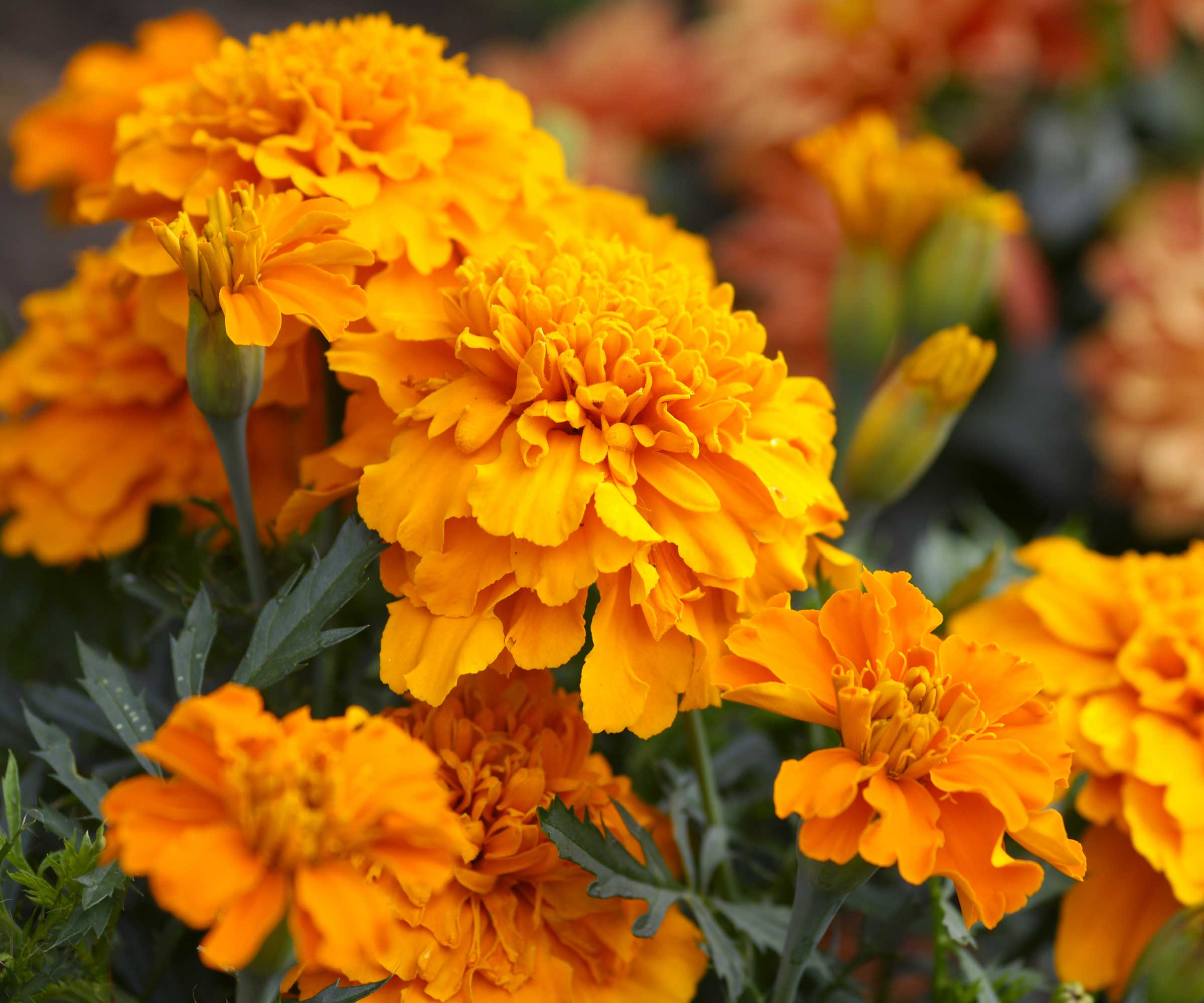
Companion planting has been used in agriculture for thousands of years, and as well as keeping pests away, this age-old technique can also increase pollination and the diversity of your garden, which can in turn make your soil healthier.
Protect onions and carrots by planting them together, plant rosemary near carrots to deter carrot flies, and plant basil near tomatoes (basil is one of the best pest-repellent plants, and it's also one of many mosquito-repellent plants, if it's mosquitoes that are invading your plot).
Landscape gardener Marco Picano is an advocate of companion planting, and finds it to be an effective strategy in his yard. 'By placing basil near tomatoes, you can naturally repel flies and mosquitoes,' says Marco. 'Similarly, planting marigolds around garden beds helps deter nematodes and aphids – marigolds release compounds in the soil that pests find unpleasant.' Marigolds and other herbs are also recommended for repelling ticks in your yard as they dislike the smell.
5. Apply a neem oil solution
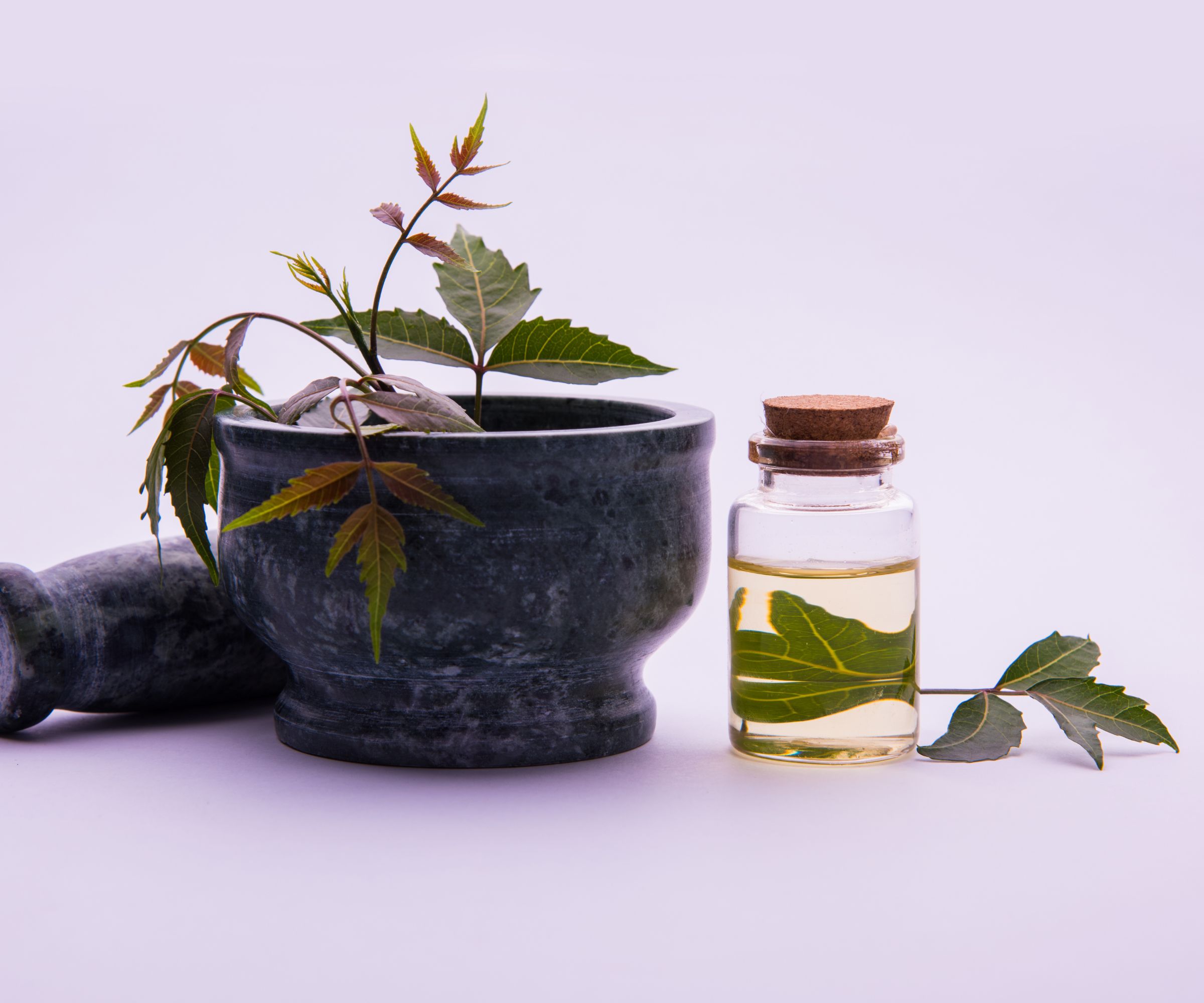
You can use neem oil on plants to get rid of a range of bugs, such as aphids, leafhoppers, spider mites, whiteflies, mealybugs, and thrips. Neem oil is a vegetable oil that comes from the seeds of a neem tree, which is native to the Indian subcontinent and parts of Southeast Asia.
It's a favourite of Jennifer Hankey, founder and CEO of The Green Queen pest control company, who says that not only is it a pest control powerhouse, but it's also available at your local big box store. 'Look for the OMRI (Organic Materials Review Institute) label when buying gardening products to ensure the products are approved for organic gardening,' Jennifer advises.
Use neem oil, at Amazon, to create a homemade bug spray – just combine two tablespoons of neem oil with one tablespoon of organic dish soap in a gallon of water. 'Spray this solution on your plants weekly; it disrupts the lifecycle of many pests while being non-toxic to beneficial insects,' says Marco Picano.
6. Sprinkle diatomaceous earth around your plants
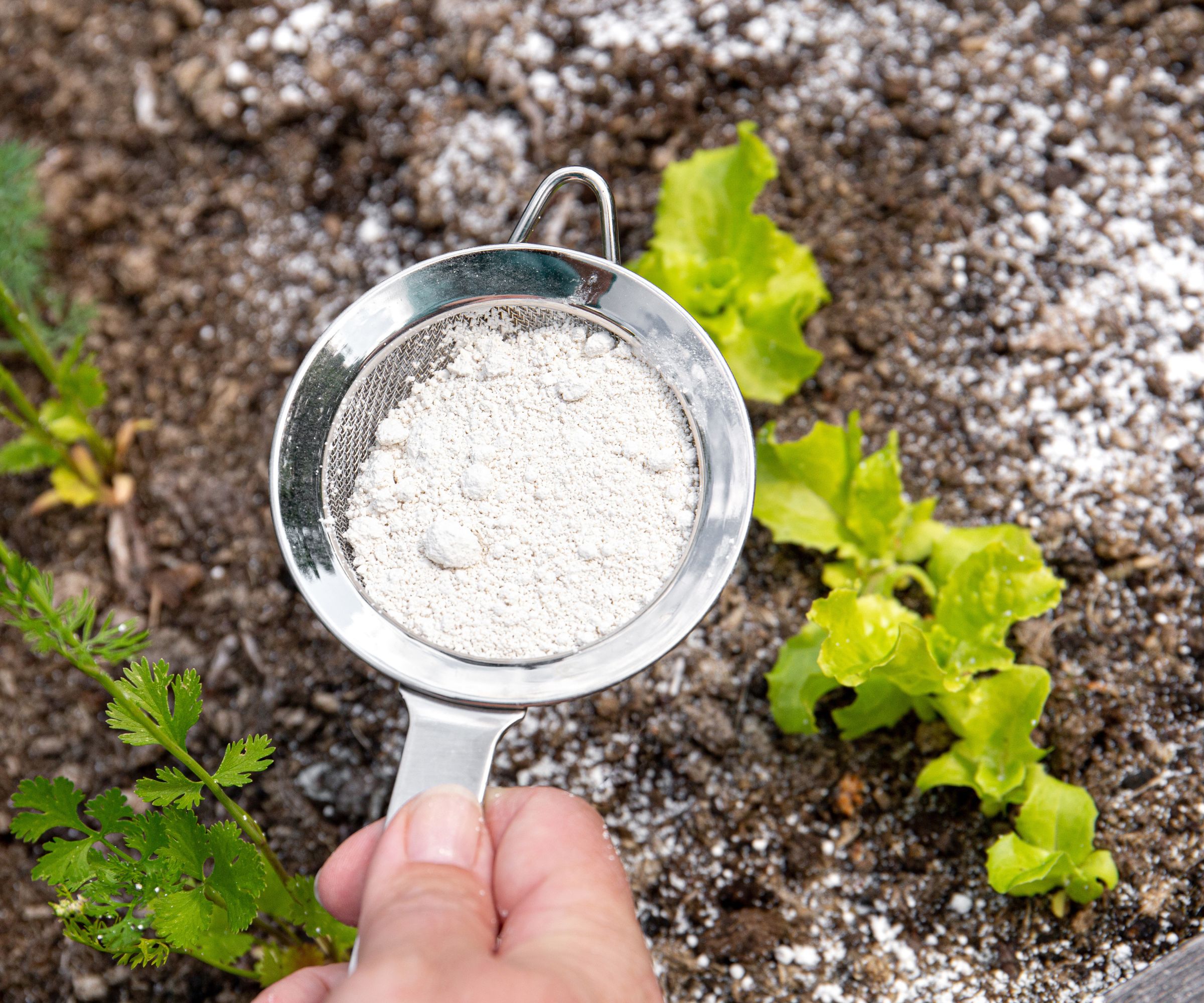
Using diatomaceous earth around the base of plants is a good way to control slugs, snails, beetles, and other bugs. This fine powder dehydrates pests on contact, effectively reducing their populations.
'Personally, I love to use diatomaceous earth as a natural outdoor pest control method,' shares Brett Bennett from Purcor Pest Solutions. 'In my experience, diatomaceous earth does live up to its reputation as being an effective pest killer that's completely safe around kids, pets, and your indoor and outdoor plants.'
Apply the dust by hand or with a bulb duster, available at Amazon, focusing on the areas around the edge of your outdoor plants – especially any that are already being eaten by pests to help clear up infestations.
As a natural source of freshwater amorphous silica, this diatomaceous earth makes for a great natural pest control method.
7. Encourage frogs and birds to your plot
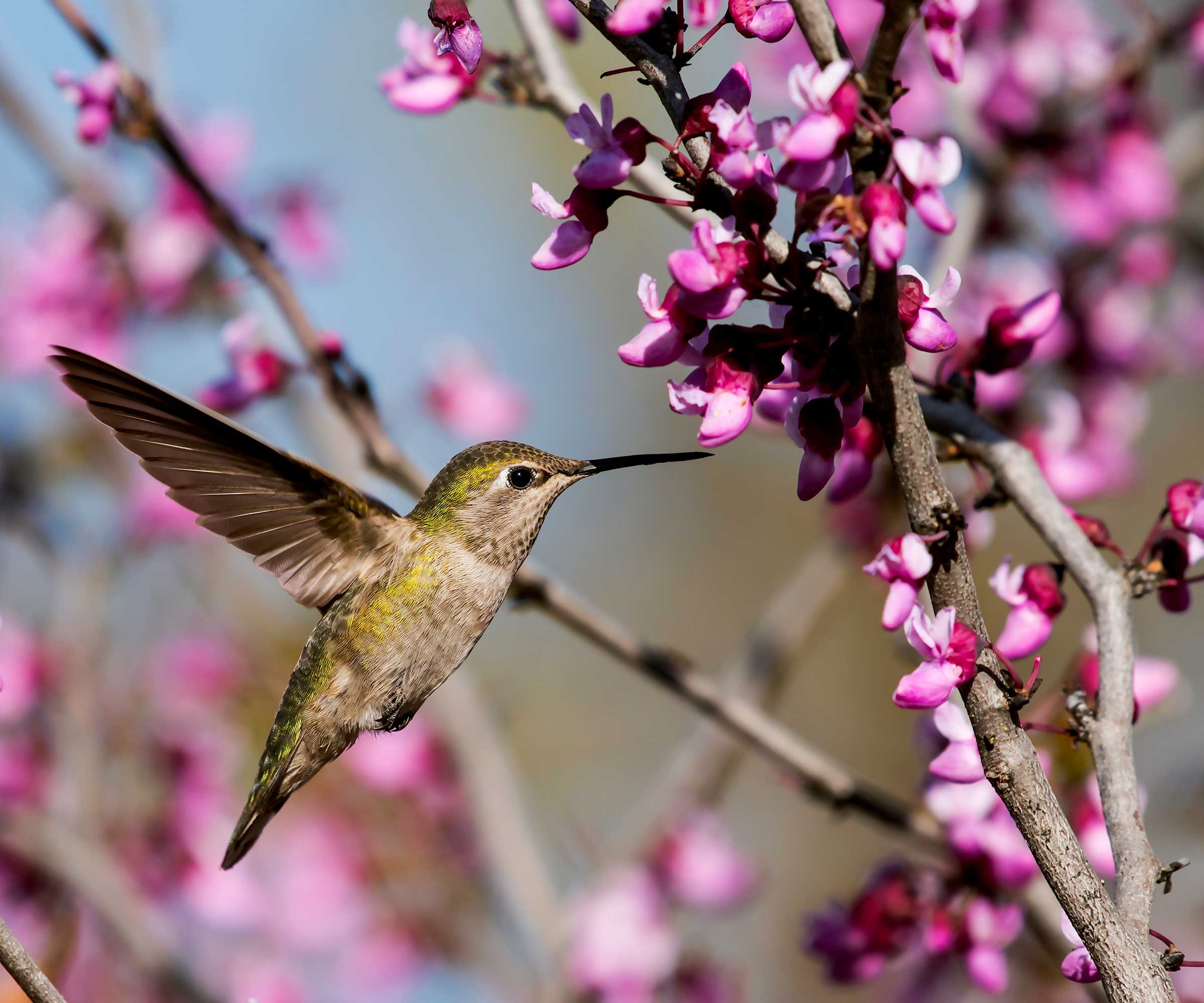
The best, environmentally friendly way to keep on top of pests in your yard is to increase its diversity and make a natural and interdependent habitat for wildlife. Creating a wildlife garden rich in flora and fauna will mean there are natural predators for bugs that prove a nuisance.
Of course, the slugs and snails may still come, so this approach requires a 'live and let live' attitude. 'Think about the food chain and what eats what,' says Rachel Bull. 'Attract frogs to your yard, and you'll have fewer issues with mosquitoes and slugs. Similarly, if you can invite birds with a bird bath, bird feeders or plants for birds, this will help to control slug and snail populations, and by attracting ladybugs you can keep a handle on aphids.'
Depending on the space you have, consider growing more fruit and vegetables than you need, so that if some are eaten by bugs and birds, it isn't such a problem.
FAQs
How can I stop pests eating plant leaves?
There are many ways you can stop pests from eating plant leaves, and one method known to be effective is using a garlic spray. Crush several cloves of garlic and mix them with water. Let it sit overnight, strain, and spray directly on plants. Garlic acts as a potent deterrent for a variety of pests, including beetles and aphids.
If you are growing a vegetable garden, try picking your crop early, as sometimes we wait an extra night when fruit and veg is ready to be harvested only to find they have been eaten the next day - it depends on what you are growing, but lots of fruits will ripen after being picked.







